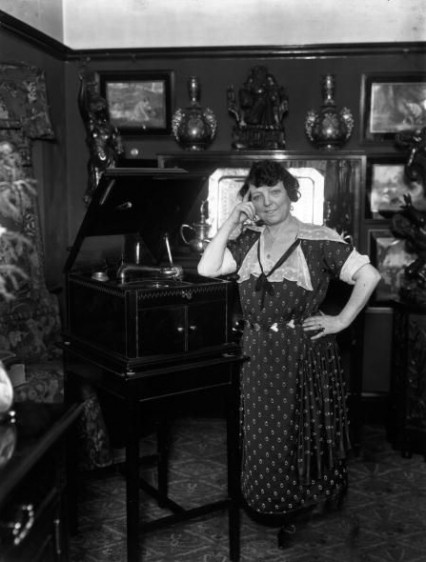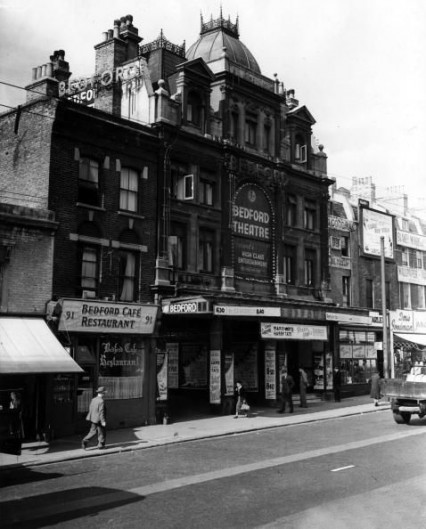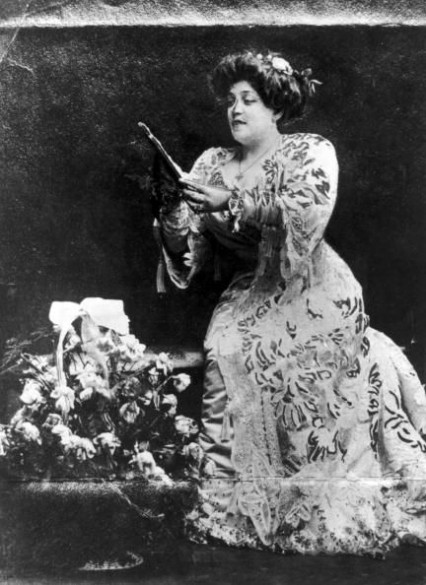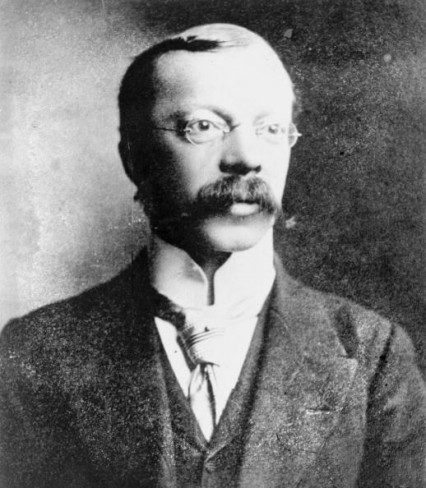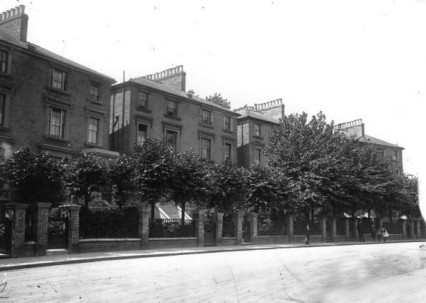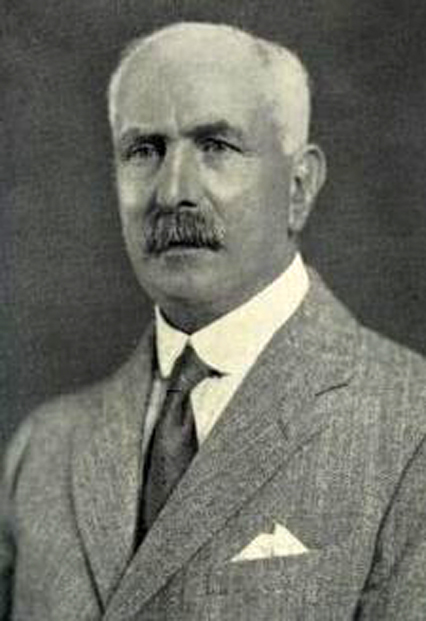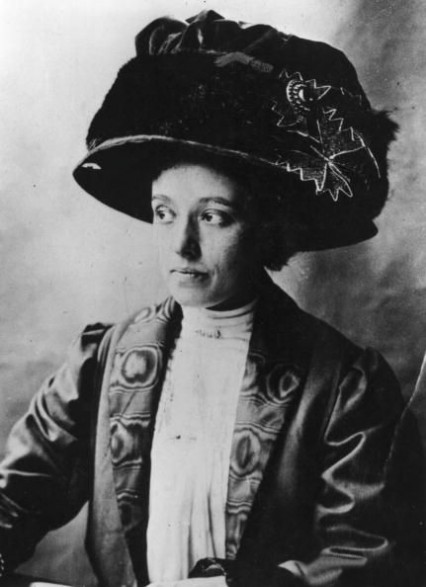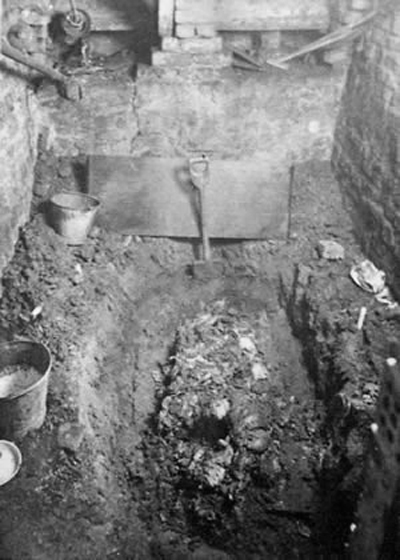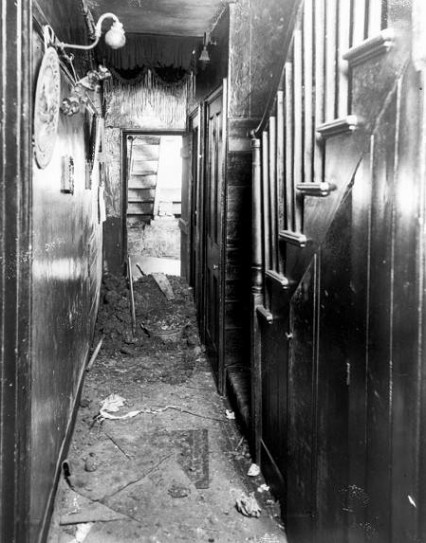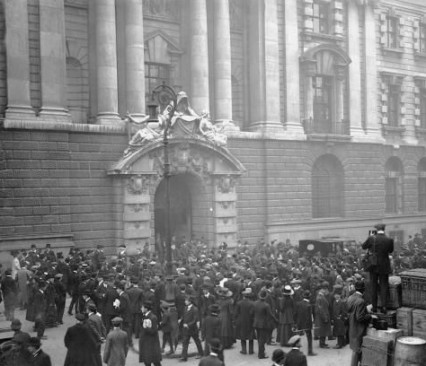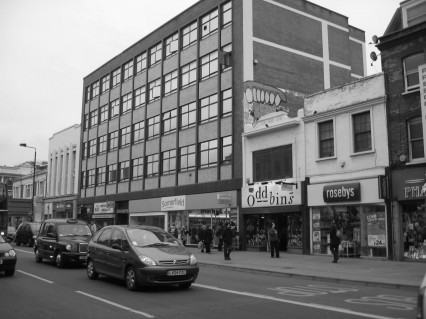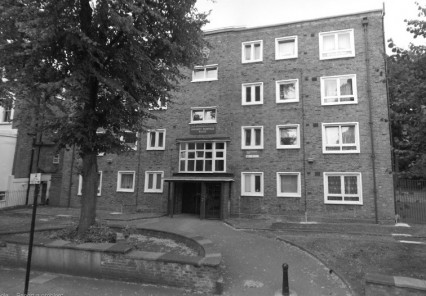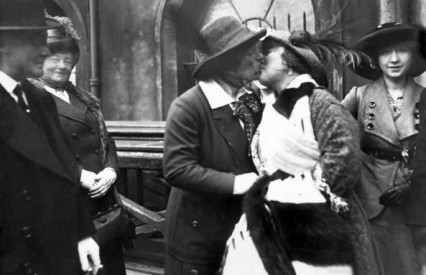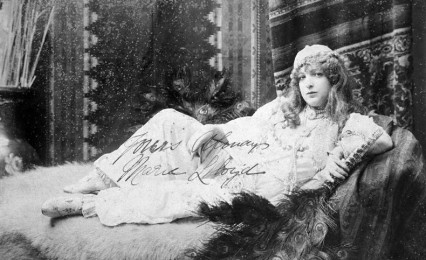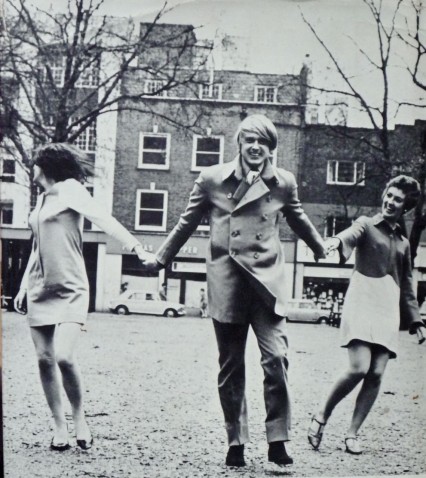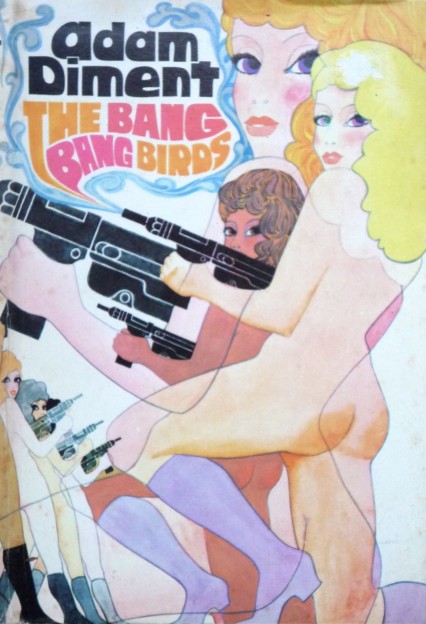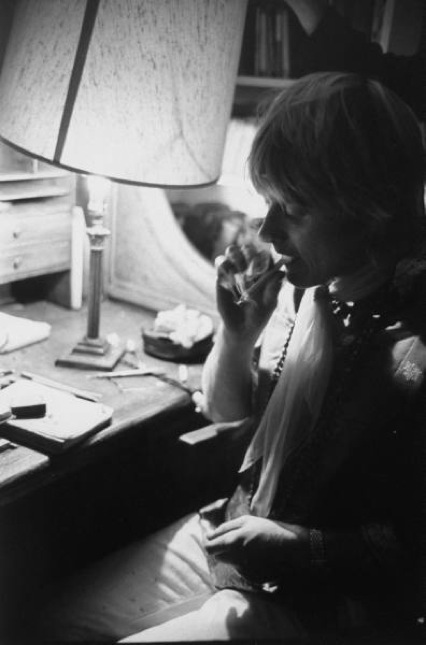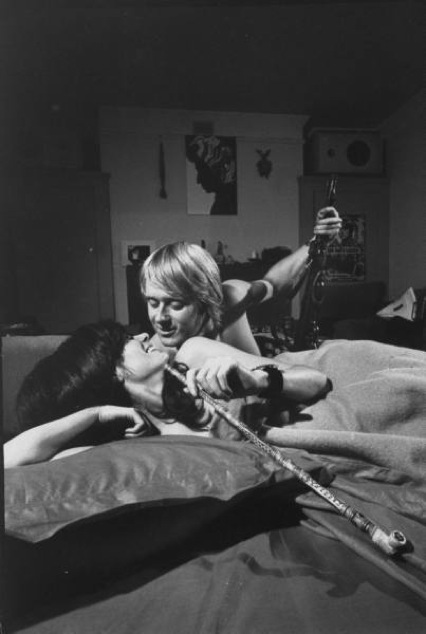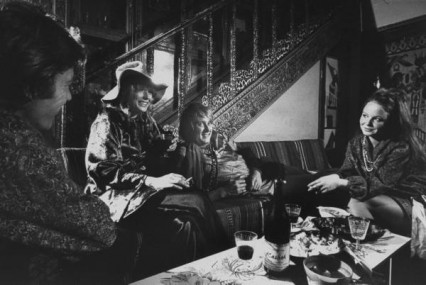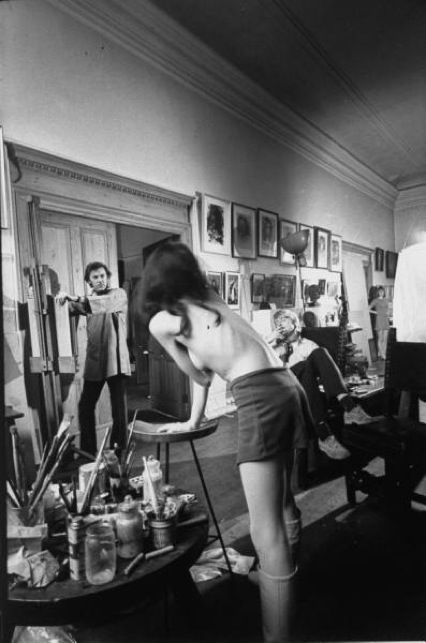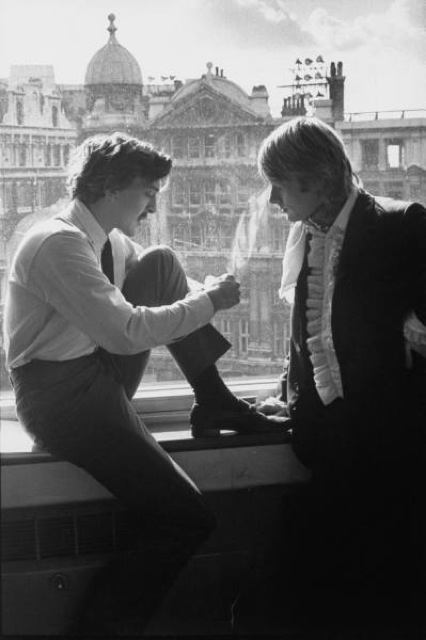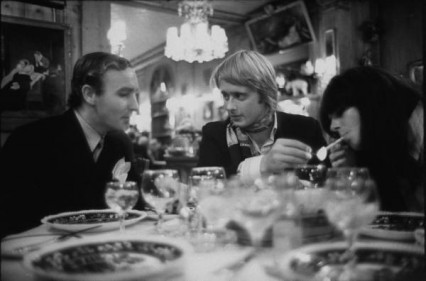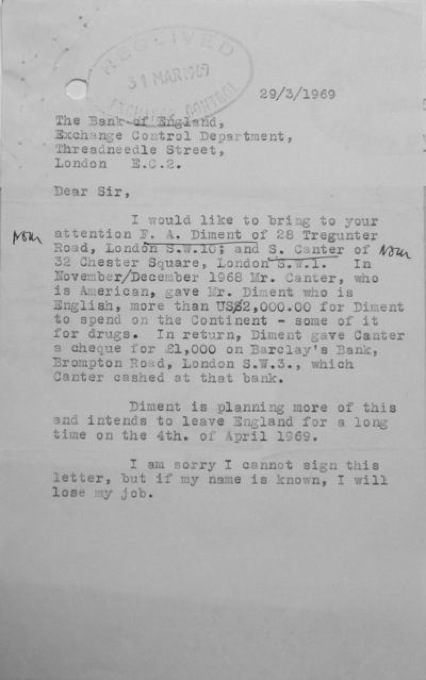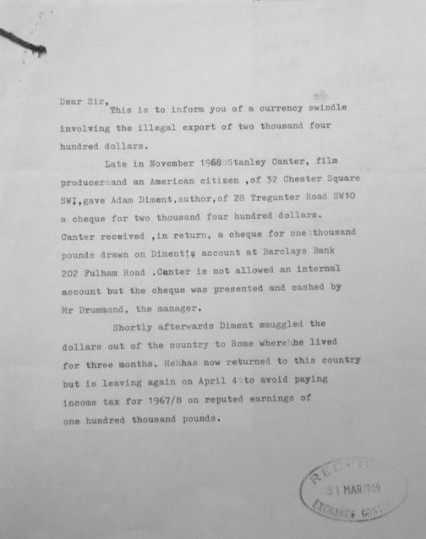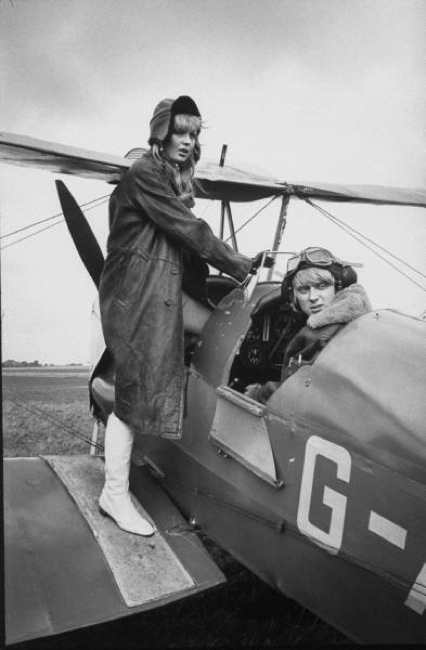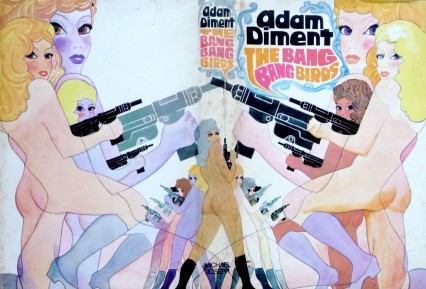There is a strange, but rather brilliant documentary, directed in 1967 by Norman Cohen, called The London Nobody Knows, the beginning of which features a slightly incongruous James Mason, in very smart polished shoes, gingerly stepping over the literally putrefying remains of an old music hall theatre.
The building was the Bedford Music Hall on Camden High Street and it was said to be Marie Lloyd’s favourite place to perform. Unfortunately the theatre closed permanently in 1959 and the sad, rotting building was eventually demolished ten years later. Two years after nearly ruining James Mason’s brogues.
Excerpt from The London That Nobody Knows
At one point in the film James Mason mentions, with a wry smile on his face, that an early regular performer at the Music Hall may well have still been haunting the place – a local singer called Belle Elmore.
Elmore’s stage career was relatively unsuccessful and her name is unknown to most of us today, especially as a Music Hall artiste. However, after her death in 1910 she achieved notoriety throughout the land, not as a singer, but as the murdered wife of the infamous Dr Hawley Harvey Crippen.
Before the infamous Doctor had murdered Elmore and subsequently burnt her bones in the oven, dissolved her internal organs in an acid bath, buried what was left of the torso under bricks in the basement and placed her decapitated head in a handbag which was subsequently thrown overboard on a day-trip to Dieppe, the married couple lived at 39 Hilldrop Crescent. It was quite a salubrious address about a mile from the Bedford Music Hall.
Dr Crippen is notorious, of course, for being the first murderer to be arrested with the use of telephony when, during an attempted escape to Canada on the SS Montrose with his young lover Ethel Le Neve, Captain Henry George Kendall sent a telegraph back to England saying:
Have strong suspicions that Crippen London cellar murderer and accomplice are among saloon passengers. Moustache taken off growing beard. Accomplice dressed as boy. Manner and build undoubtedly a girl.
Chief Inspector Dew, who had already once interviewed Crippen and initially decided that he was innocent, took the faster White Line steamer – the SS Laurentic – to Canada. On the 31 July 1910 the Inspector greeted the couple when they met him on the ship:
Good morning, Dr Crippen. Do you know me? I’m Chief Inspector Dew from Scotland Yard.
After a pause, Crippen replied,
Thank God it’s over. The suspense has been too great. I couldn’t stand it any longer.
Crippen then held out his arms for his handcuffs. Dew later recalled:
Old Crippen took it quite well. He always was a bit of a philosopher, though he could not have helped being astounded to see me on board the boat. He was quite a likeable chap in his way.
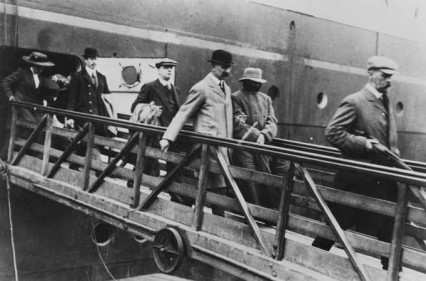
Dr Crippen being led off the SS Montrose, seemingly by one of the Thompson twins but more likely by Chief Inspector Dew
Crippen and Ethel Le Neve were tried separately by the Central Criminal Court at the Old Bailey and Crippen, likeable philosopher or not, was found guilty after just 27 minutes by the jury and subsequently hanged at Pentonville prison in November 1910. Ethel Le Neve, however, was acquitted and only died in 1967 – not long after James Mason was filmed exploring what was left of the Bedford Music Hall.
James Mason in his piece about the old theatre in Camden failed to relate that only nine years after Marie Lloyd’s fiftieth birthday celebrations (which were incidentally held at the Bedford), and seven years after her death in 1922, the comic-actor Peter Sellers actually lived at the Bedford with his mother and grandmother in a rented flat above the entrance in Camden High Street.
Sellers’ mother was performing at the Bedford in a production called ‘Ha!Ha!!Ha!!!’ along with his father. When the revue finished, Peter’s father Bill suddenly decided to leave home forever, leaving Peter, his mother, and grandmother to totally fend for themselves while still living upstairs at the theatre. Sellers may well have been still living in the flat above the Bedford when he performed, at the age of five, with his mother in a revue called Splash Me! at the Windmill theatre in Great Windmill Street.
The Bedford Theatre’s fortunes eventually declined and, like many other theatres and converted cinemas in London, it eventually capitulated to its unavoidable fate when it fell dark completely in 1959.
Dr Crippen’s old address, 39 Hilldrop Crescent, was spared the indignity of being demolished at the whim of a sixties Camden council planning meeting, but only because it was destroyed by a bomb in the Second World War. It was replaced, like so many other buildings, by a nondescript block of flats. Another nondescript block was built to replace the Bedford Theatre. It is still known as Bedford House though.
If Heat magazine, or perhaps Perez Hilton, had existed before the First World War they would have surely printed the picture above which features a 43 year old Marie Lloyd embracing and kissing a woman called Claire Loumaine. The photograph was taken on 25th April at Paddington Station where the music hall star had gone to meet Loumaine on her return from Australia.
Does anyone know who Claire Loumaine is? I can’t find anything about her at all.
Nine years after Marie Lloyd greeted her close friend off the train at Paddington the music hall star collapsed on stage during a rendition of one of her most famous songs I’m One of the Ruins That Cromwell Knocked About a Bit. The crowd continued laughing thinking that the staggering around that preceded the fall was all part of her act. Lloyd was desperately ill however, and died soon after on 7th October 1922. One hundred thousand people were reported to have attended her funeral five days later in Hampstead.
